Struggling AC Unit? Common Late-Season Problems
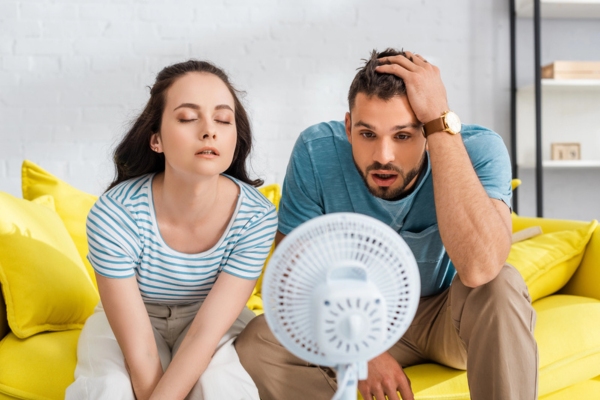
As summer draws to a close, many air conditioning systems face heightened stress due to rising outdoor temperatures. Unfortunately, this is often the time when these systems start to show signs of wear. At Hart Home Comfort, we specialize in helping homeowners in Nassau County, Suffolk County, and Queens, New York, address common end-of-summer AC issues before they compromise comfort and efficiency.
This article addresses the common question, “Why is my AC not keeping up during the final weeks of summer?” We’ll cover the primary culprits of late-season cooling issues, including dirty components, thermostat malfunctions, refrigerant depletion, and system wear. Plus, we’ll explain when to call in a professional for service.
Regain Optimal Cooling Unit Efficiency: Rely on Hart Home Comfort for expert air conditioner repairs and diagnostics. Reach out today!
Addressing End-of-Season AC Challenges: Why Is My Air Conditioner Struggling to Keep Up?
Table of Contents
- 1 Addressing End-of-Season AC Challenges: Why Is My Air Conditioner Struggling to Keep Up?
- 1.1 Clogged HVAC Air Filters and Decreased Air Conditioner Efficiency
- 1.2 Cooling System Refrigerant Leaks & Low Refrigerant Charge
- 1.3 Dirty Air Conditioning System Evaporator & Condenser Coils
- 1.4 Underperforming or Aging Air Conditioner Units
- 1.5 Incorrect HVAC Thermostat Settings & Calibration
- 1.6 Leaky HVAC Ducts & Inadequate Insulation
- 1.7 Malfunctioning Air Conditioning Blower Motor or Capacitor
- 2 When to Reach Out to Hart Home Comfort for Professional HVAC Assistance
- 3 Why Is My AC Struggling to Keep Up? – FAQs
- 3.1 How Do High Outdoor Temperatures Impact My Air Conditioner’s Performance at the End of Summer?
- 3.2 Will Switching to a Variable-Speed HVAC System Improve Cooling Efficiency During Late Summer?
- 3.3 Can High Indoor Humidity Affect My AC System’s Performance?
- 3.4 How Does Restricted Airflow in Ductwork Affect Air Conditioner Performance?
- 3.5 Do Smart Thermostat Features Improve AC Efficiency During Late Summer?
- 4 Conclusion
- 5 Contact Hart Home Comfort for Dependable HVAC Services
As summer reaches its hottest point, many air conditioning systems exhibit reduced performance and efficiency. Identifying the root causes of these problems allows you to take proactive steps before the heat becomes unbearable.
Clogged HVAC Air Filters and Decreased Air Conditioner Efficiency
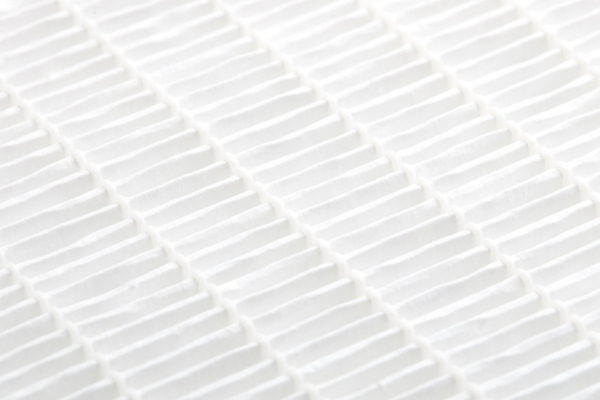
A clogged air filter is one of the most frequent causes of late-season AC problems. Over time, filters accumulate dust, pollen, and other debris, blocking airflow within the system. This obstruction lowers cooling efficiency and puts additional strain on the unit.
The system works harder to circulate air, causing higher indoor temperatures and increased energy consumption. Neglecting to clean or replace these filters can result in long-term damage to your HVAC system, resulting in costly repairs down the line.
Homeowners frequently observe reduced airflow from vents or uneven temperatures across the home. These are clear indicators that the filter requires attention.
At the height of the cooling season, pleated filters should be replaced at least every 30 days to ensure optimal airflow and system efficiency. Regular filter replacement helps protect your AC unit and maintain consistent comfort throughout the peak summer heat.
Stay Cool During Late-Summer Heat: Trust Hart Home Comfort for thorough HVAC maintenance and expert tune-ups. Contact us today!
Cooling System Refrigerant Leaks & Low Refrigerant Charge
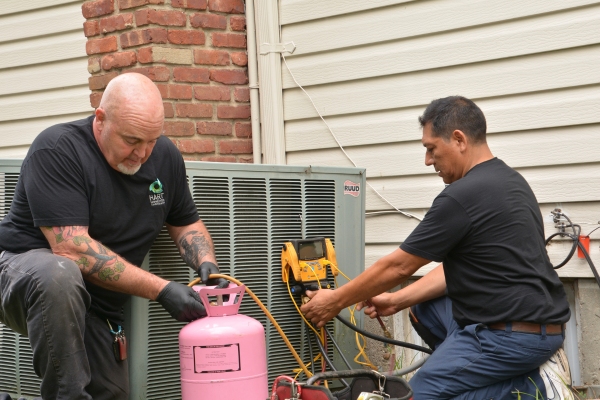
Throughout the summer, the system’s constant thermal expansion and contraction can cause joints and fittings to loosen, leading to slow refrigerant leaks as the season progresses. This can result in longer cooling cycles, diminished cooling power, and visible ice buildup on the evaporator coil—key indicators of a low refrigerant level. Another sign of refrigerant loss is warm air blowing from the vents.
Refrigerant handling requires specialized tools and EPA certification, so only trained professionals should perform an AC recharge. They have the expertise to detect refrigerant leaks, repair the affected components, and restore the system’s refrigerant levels, ensuring optimal performance.
Maintain Consistent Comfort Across Your Home: Trust Hart Home Comfort for professional duct sealing and airflow optimization. Contact us today!
Dirty Air Conditioning System Evaporator & Condenser Coils
Over the cooling season, the evaporator and condenser coils accumulate pollen, grass clippings, and other airborne debris. This accumulation creates an insulating layer that hinders heat transfer, reducing the system’s efficiency in removing heat from your home. When the coils are dirty, the AC has to run longer to achieve less effective cooling results.
To ensure optimal performance, schedule professional coil cleaning at least once a year. Homeowners can also assist by lightly brushing or vacuuming accessible coils between service visits. These coil-cleaning practices are key components of proper condenser maintenance.
Underperforming or Aging Air Conditioner Units
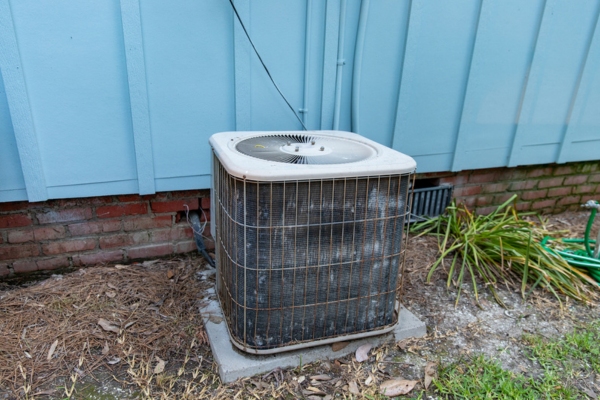
An undersized air conditioner may struggle to meet your home’s cooling needs, particularly after renovations, room additions, or insulation upgrades. When the system can’t handle the increased load, it runs for longer periods and has difficulty cooling effectively, leading to typical late-season AC problems. Similarly, as an air conditioning unit ages, its efficiency decreases, further contributing to performance issues and rising indoor temperatures.
Look for these signs of an undersized or aging air conditioning system:
- Frequent or short cycling
- Increased energy costs
- Inconsistent or weak temperature control
If you notice these symptoms, it might be time to consider replacing your aging AC unit. A professional HVAC load calculation can determine the right system size for your home. Upgrading to a higher SEER rating unit will provide enhanced cooling, improved energy efficiency, and greater comfort, particularly during the hottest summer days.
Maximize Your Home’s Efficiency: Reach out to Hart Home Comfort to install and set up your smart thermostat for optimized cooling. Contact us today!
Incorrect HVAC Thermostat Settings & Calibration
Improper thermostat settings are a common cause of late-season AC problems. Selecting the “On” fan mode instead of the “Auto” setting keeps the fan running constantly, which can re-evaporate moisture and reduce the system’s ability to dehumidify effectively. This often results in reduced comfort on humid late-summer days.
Over time, thermostat sensors can lose accuracy, leading to calibration drift. This can cause the system to short-cycle or operate inefficiently, wasting energy and putting unnecessary strain on components.
To address these issues, switch the fan setting to “Auto,” replace outdated thermostats, or consider installing a programmable thermostat for improved control. Ensuring proper thermostat settings and regular recalibration can greatly enhance AC performance, energy efficiency, and overall comfort indoors.
Leaky HVAC Ducts & Inadequate Insulation
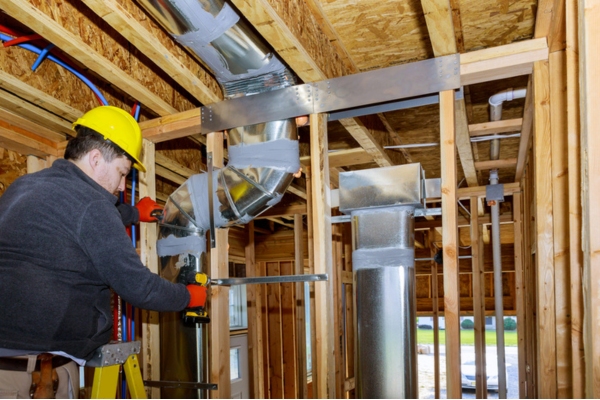
The high temperatures of summer can cause ductwork to expand, potentially creating small gaps that allow cooled air to escape, particularly in unconditioned spaces such as attics or crawl spaces. These leaks decrease system efficiency and can result in persistent hot spots or areas that remain uncomfortable.
Signs of duct issues include noticeable temperature fluctuations near vents and increased airflow noise. To resolve these problems, arrange a professional HVAC duct leak repair to identify and seal any leaks.
Meanwhile, apply mastic or metal tape to visible joints, and follow proper duct insulation practices to prevent cooled air loss and boost overall system performance.
Enhance Energy Efficiency: Explore variable-speed AC options with Hart Home Comfort for quieter, more cost-effective performance. Reach out today!
Malfunctioning Air Conditioning Blower Motor or Capacitor

After a full season of consistent use, essential components like the blower motor and start capacitor may deteriorate. As these parts lose functionality, airflow is reduced, making it challenging for the system to distribute cool air efficiently throughout the home. This type of failure is a common cause of late-season AC problems and often demands prompt attention to avoid a complete system failure.
Signs of air conditioning blower motor or capacitor failure include:
- Unusual humming or buzzing sounds
- Intermittent or slow blower operation
- No air movement despite the fan being turned on
If you notice these symptoms, professional HVAC electrical repair is necessary. A certified technician can assess the motor’s condition, replace the capacitor if needed, or suggest upgrading to a high-efficiency blower assembly to restore optimal cooling performance.
Tackle Humidity Issues: Contact Hart Home Comfort for dehumidification solutions that enhance your home’s comfort. Get in touch today!
When to Reach Out to Hart Home Comfort for Professional HVAC Assistance
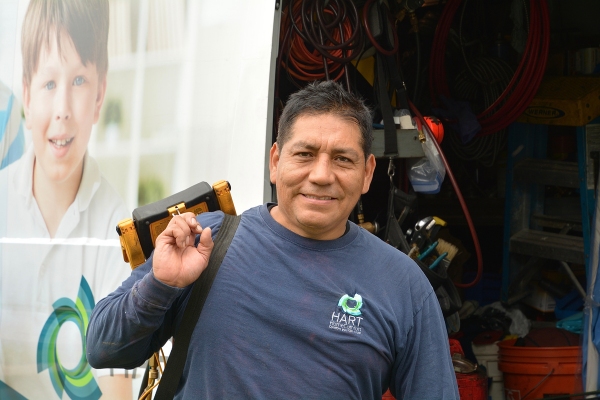
If basic troubleshooting fails to resolve the issue, it’s time to contact Hart Home Comfort for expert support. Our diagnostic process utilizes tools such as refrigerant gauges, airflow meters, and thermal imaging to accurately detect any underlying problems.
We offer comprehensive end-of-season maintenance services to restore your system’s efficiency, enhance performance, and prepare it for the remaining summer heat and upcoming colder months. If repairs are ineffective or too costly, our team will guide you through selecting a new AC system, ensuring you find an energy-efficient option that meets your home’s needs and budget.
Trusted Air Conditioner Repair Services: Rely on Hart Home Comfort for prompt, dependable AC repairs whenever you need them. Contact us today!
Why Is My AC Struggling to Keep Up? – FAQs

How Do High Outdoor Temperatures Impact My Air Conditioner’s Performance at the End of Summer?
When outdoor temperatures stay high, your air conditioner’s condenser faces difficulty expelling heat, causing refrigerant pressure to rise and diminishing cooling efficiency. As a result, the system runs longer, consumes more energy, and puts additional strain on its components. Regular professional maintenance, such as coil cleaning and refrigerant level checks, helps ensure your HVAC system can manage the intense late-summer heat.
Will Switching to a Variable-Speed HVAC System Improve Cooling Efficiency During Late Summer?
Variable-speed compressors adjust their output according to your home’s cooling demand, running at lower speeds for longer periods. This helps maintain more consistent temperatures, boosts dehumidification, and reduces energy consumption. To achieve optimal performance, consult an HVAC professional to properly size and install the ideal variable-speed system for your home’s needs.
Can High Indoor Humidity Affect My AC System’s Performance?
Excess indoor humidity makes your air conditioner work harder by removing moisture before it can lower the air temperature. This can make rooms feel damp or muggy, even when the thermostat setting is reached. To improve dehumidification, try setting your fan to “Auto,” installing a whole-house dehumidifier, or scheduling an HVAC assessment to ensure your cooling system provides true comfort.
Maintain Your AC’s Efficiency: Book your end-of-summer service with Hart Home Comfort, your trusted local HVAC specialists. Reach out today!
How Does Restricted Airflow in Ductwork Affect Air Conditioner Performance?
Leaky or inadequately insulated ducts create pressure imbalances and reduce airflow through your vents, forcing your air conditioner to work harder to cool each room. This increases energy bills and puts additional strain on the blower motor. Professional duct sealing and balancing restore proper airflow and static pressure, allowing your AC to operate at its highest efficiency.
Do Smart Thermostat Features Improve AC Efficiency During Late Summer?
Smart thermostats adapt to your cooling preferences, adjust settings based on occupancy or outdoor temperatures, and allow for remote monitoring. These features help minimize unnecessary runtime and reduce stress on your system during peak heat. To integrate smart controls effectively, contact an HVAC professional who can provide full HVAC services and expert thermostat calibration.
Conclusion
Late-season AC performance issues often stem from airflow restrictions, refrigerant loss, dirty coils, thermostat malfunctions, or aging equipment. These common problems arise after months of use but can be fixed with timely attention. Proper seasonal maintenance and focused repairs can restore your system’s cooling efficiency.
Beat the heat—contact Hart Home Comfort today for a comprehensive system check, professional HVAC services, or expert upgrades in Nassau County, Suffolk County, and Queens, New York. Stay comfortable all season long.
Upgrade to Cutting-Edge HVAC Solutions: Trust Hart Home Comfort to improve your cooling with high-efficiency system upgrades. Contact us today!
Contact Hart Home Comfort for Dependable HVAC Services
Hart Home Comfort offers exceptional heating and cooling services in Nassau County, Suffolk County, and Queens, New York. Our certified HVAC technicians specialize in tune-ups, repairs, installations, replacements, and more. With extensive training and years of experience, our technicians ensure your HVAC system is serviced accurately and efficiently.
We take pride in offering the region’s most budget-friendly rates for heating and cooling services. Our maintenance services enhance comfort and energy efficiency and reduce heating and cooling costs. Whether you require a repair or a complete system replacement, Hart Home Comfort will help you find the best solution for your needs and budget. We stand by our work with a solid satisfaction guarantee.
Call Hart Home Comfort today to schedule your service appointment and receive a personalized in-home consultation. Reach out now!
For any questions about what Hart Home Comfort can do for you, give us a call today. Click here to contact us now or call us at (631) 667-3200 to find out more! Click the link to view our service area.

Related Articles: